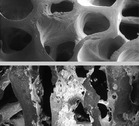Paget's Disease of Bone
What is Paget's Disease of Bone?
Enlarged and Misshapen Bones
Paget's disease of bone causes affected bones to become enlarged and misshapen. Our bones are living tissue, and our bodies are constantly breaking down old bone and replacing it with new bone. In Paget's disease, however, old bone is broken down and replaced at a faster rate than normal. The new bone is larger and weaker than normal bone.
Paget's disease can occur in any bone in the body, but it is most common in the pelvis, spine, skull, and leg bones. It may occur in just one bone or in several bones, but it does not affect the entire skeleton or spread from affected bones to normal bones. Common symptoms include pain, misshapen bones, and a greater chance of broken bones.
Complications
Paget's disease can also lead to complications, such as arthritis, headaches, hearing loss, or nervous system problems, depending on which bones are affected. If not treated, Paget's disease can reduce a person's ability to perform activities of daily living, thereby reducing quality of life.
Although it is the second most common bone disease after osteoporosis, Paget's disease is still uncommon. According to Bone Health and Osteoporosis: A Report of the Surgeon General, an estimated 1 million people in the U.S. have Paget's disease, or about 1.3 people per 100 men and women age 45-74. The disease is more common in older people and those of Northern European heritage. Men are more likely than women to have the disease.
Cause is Unknown
Paget's disease is named after the British surgeon, Sir James Paget, who first identified the disease in 1877. Researchers are not sure what causes it. Heredity may be a factor in some cases. Research suggests that a close relative of someone with Paget's disease is seven times more likely to develop the disease than someone without an affected relative. However, most people with Paget's disease do not have any relatives with the disease. Researchers think the disease also may be caused by other factors, such as a slow-acting virus.
A Treatable Disease
The good news is that Paget's disease of bone is treatable, especially if it is diagnosed early. In recent years, the Food and Drug Administration has approved several medications that can stop or slow the disease's progression. In some cases, surgery can help patients manage the symptoms and complications of the disease.






